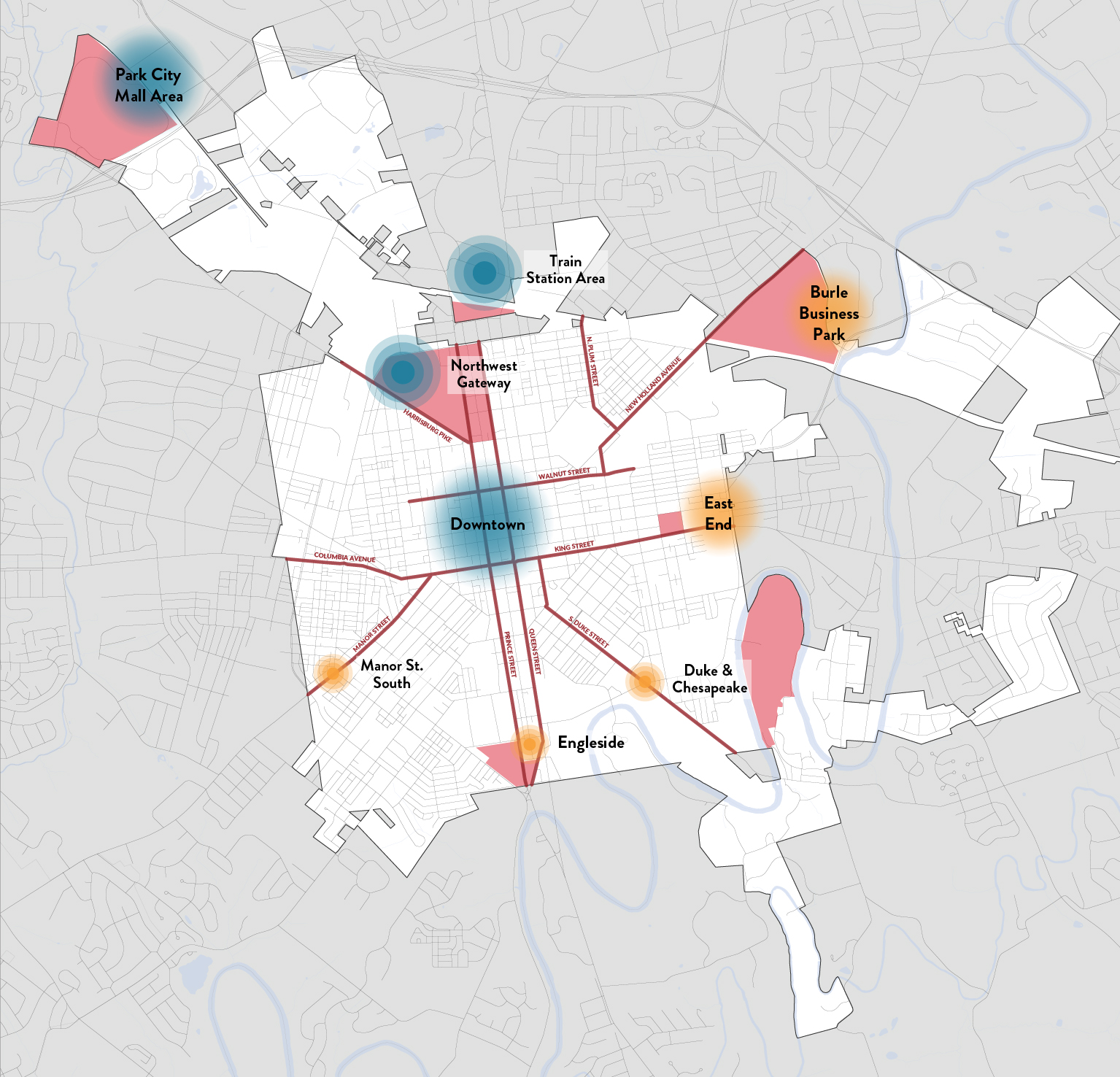CONTEXT
Strategies for economic success must be supported by sound land use and development policies. Lancaster City is fortunate to have strong commercial and retail areas that have become local and regional destinations. Some examples are the retail on the 300 block of N. Queen St., the art galleries on the 100 block of N. Prince St., and the Lancaster County Convention Center area. Land use policies should support the continued success of these areas, while creating opportunities for other areas of the city to similarly thrive.
In 2014, Lancaster City Alliance (LCA) in partnership with the City of Lancaster developed an economic development strategic plan known as Building on Strength. This plan presents a vision to enhance the community’s quality of life and ensure economic growth. Together, LCA and the City continue to implement the plan and track its success.
ECONOMIC DEVELOPMENT POLICY DESIGNATIONS
The guidance provided below expands on the efforts of Building on Strength and describes the next generation of economic development in Lancaster City. Strategic investment opportunities have been identified using the concept of “corridors” and “hubs” outlined in Building on Strength. The following categories are used to implement economic development policies:
- Main Street Commercial Corridors: Main Street Corridors feature a mix of land uses and typically have an established pattern of commercial development. This pattern may be continuous or intermittent. Medium to high density development is desired on Main Street corridors, and City agencies and organizations should continue to direct resources to these areas.
- Regional Commercial Hubs: Regional Commercial Hubs are large areas along major roadways that can support intensive commercial activity and serve residents from across the city and surrounding municipalities. These areas have large-scale development or redevelopment opportunities.
- Community Commercial Hubs: Community Commercial Hubs are medium-sized areas that can support moderate commercial activity and serve one or more city neighborhoods. These areas have significant—but smaller-scale—development or redevelopment opportunities compared to Regional Commercial Hubs.
- Emerging Hubs: Emerging hubs have the potential to be stronger regional or community destinations and gathering places. Dedicated planning strategies and infrastructure improvements may be needed to further the development of emerging hubs, including the tailored strategies in the Building on Strength Plan. The City should prioritize public, private, and nonprofit investments in these areas.
- Land Use Change Areas: Land Use Change Areas are areas likely to undergo notable changes in land use patterns and development in the next 10–20 years. Any area identified as a Land Use Change Area will require a Small Area Plan or similar planning initiative to guide redevelopment. Land Use Change Areas also reflect where new land use designations have been made on the Future Land Use Map to help facilitate community and economic development objectives.
Figure 4-3 presents the Economic Development Policy Map for the city, using these categories. The designations above work in tandem with the Future Land Use Map to establish a land use and economic development framework for the city.

Figure 4-3: Economic Development Policy Map